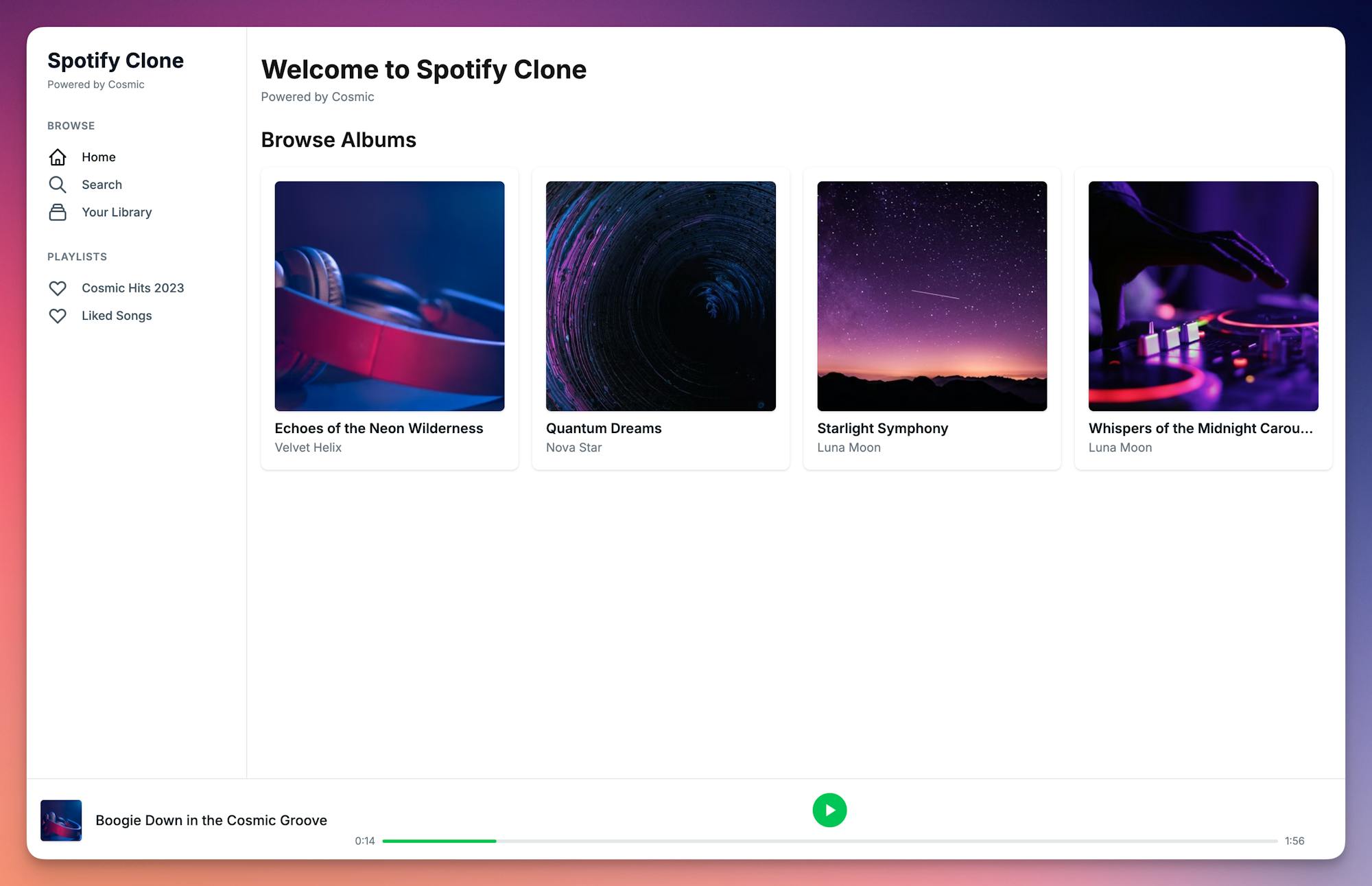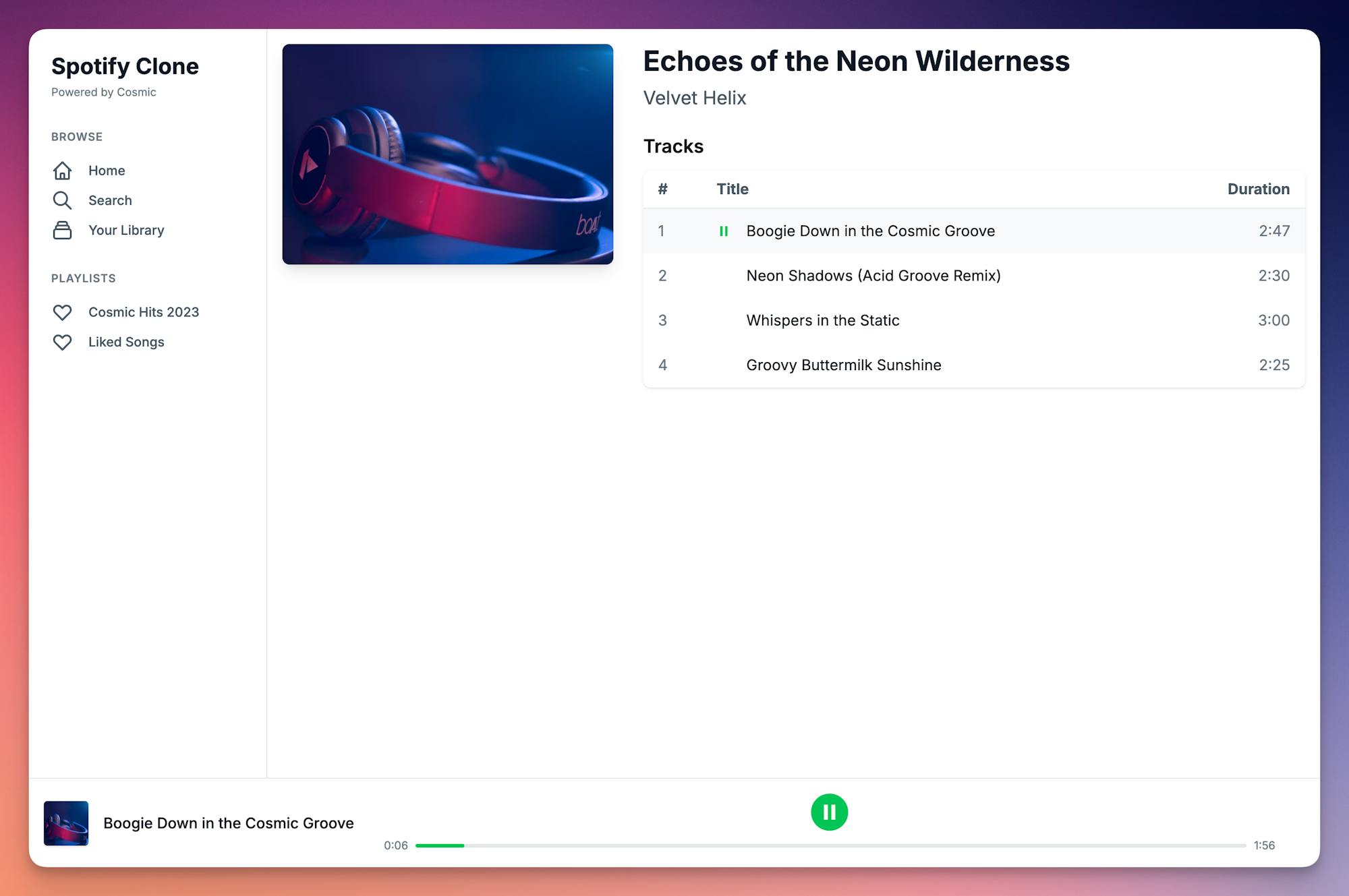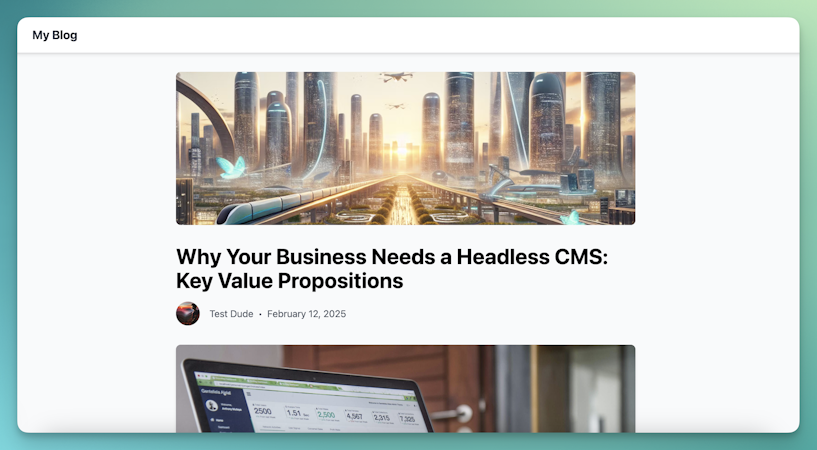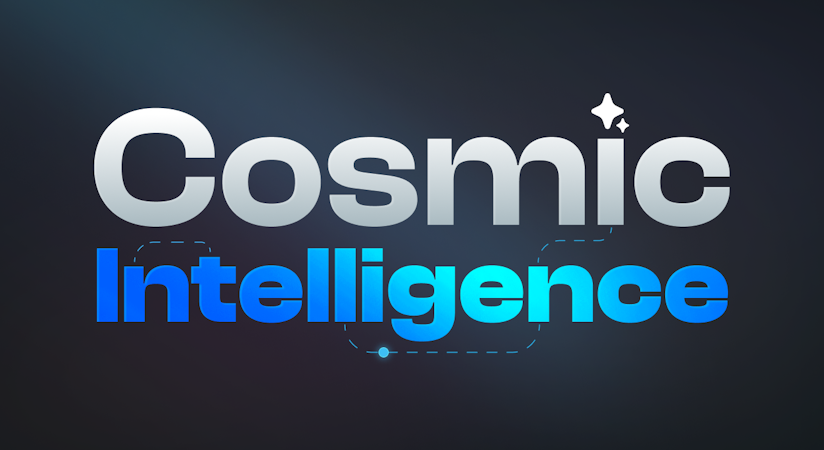
Cosmic Intelligence
March 21, 2025

How to Build a Spotify Clone with Next.js and Cosmic
Streaming music platforms have revolutionized how we consume audio content. In this tutorial, we'll build a Spotify-like music streaming application using Next.js for the frontend and Cosmic as our headless CMS to manage music tracks, artists, and playlists.


What We'll Build
Our Spotify clone will feature:
- Music library with artists, albums, and tracks
- Playlist creation and management
- A music player with playback controls
- Responsive design for all devices
Prerequisites
- Node.js 18.x or later (if using npm)
- Bun runtime (if using bun, recommended)
- A Cosmic account and bucket
- Basic knowledge of React and TypeScript
Setting Up Our Project
First, let's create a new Next.js project with TypeScript:
Using bun (recommended):
Using npm:
Install the required dependencies:
Using bun:
Using npm:
Initialize Tailwind CSS:
Using bun:
Using npm:
Update your :
Setting Up Environment Variables
Create a file in your project root:
Project Structure
Let's organize our project with the following structure:
Setting Up TypeScript Types
Create to define our data types:
Configuring Cosmic Connection
Create :
Seeding the CMS
Create to set up our object types and sample content:
Run the seed script to set up your Cosmic bucket:
Building the Application
1. Create the Root Layout
Create :
2. Create the Player Context
Create :
3. Create Server Actions
Create :
4. Create Components
AlbumCard Component
Create :
MusicLibrary Component
Create :
TrackList Component
Create :
MusicPlayer Component
Create :
The MusicPlayer component includes several key features:
- Playback Controls: Users can play/pause tracks using the play/pause button in the UI.
- Keyboard Controls: The spacebar can be used to play/pause tracks from anywhere on the page, making it convenient for users to control playback without having to click the UI.
- Progress Bar: A visual progress bar shows the current position in the track and allows users to see how much of the track has played.
- Track Information: Displays the current track's title, artist, and album cover.
- Time Display: Shows the current time and total duration of the track.
The component uses the library for audio playback and manages its state using React hooks. It also includes keyboard event listeners for enhanced user experience.
5. Create Pages
Home Page
Create :
Album Detail Page
Create :
Playlist Page
Create :
Running the Application
Start the development server:
Conclusion
We've successfully built a Spotify clone using Next.js and Cosmic! Here's what we've accomplished:
- Created a modern, responsive music streaming application
- Implemented a music player with playback controls and keyboard shortcuts
- Built a library system for albums and playlists
- Set up a headless CMS with Cosmic to manage our music content
- Created a beautiful UI with Tailwind CSS
The application demonstrates the power of combining Next.js for the frontend with Cosmic as a headless CMS. We've shown how to:
- Structure a Next.js application with TypeScript
- Manage state with React Context
- Handle server-side rendering and data fetching
- Create reusable components
- Implement audio playback functionality
- Style our application with Tailwind CSS
Next Steps
Here are some ideas to enhance the application further:
- Authentication: Add user authentication to allow users to create and manage their own playlists
- Search Functionality: Implement a search feature to find tracks, albums, and artists
- User Profiles: Create user profiles with listening history and favorite tracks
- Social Features: Add the ability to follow artists and share playlists
- Offline Mode: Implement offline playback using service workers
- Mobile App: Create a mobile app version using React Native or Next.js mobile features
Resources
- Next.js Documentation
- Cosmic Documentation
- Tailwind CSS Documentation
- React Audio Player Documentation
We hope this tutorial has helped you understand how to build a modern music streaming application. Feel free to customize the design and add more features to make it your own!



